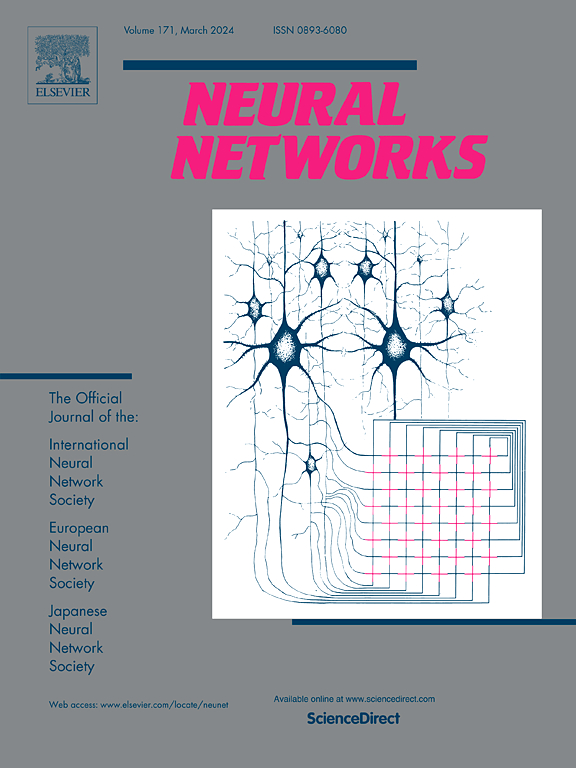An object detection-based model for automated screening of stem-cells senescence during drug screening
IF 6
1区 计算机科学
Q1 COMPUTER SCIENCE, ARTIFICIAL INTELLIGENCE
引用次数: 0
Abstract
Deep learning-based cell senescence detection is crucial for accurate quantitative analysis of senescence assessment. However, senescent cells are small in size and have little differences in appearance and shape in different states, which leads to insensitivity problems such as missed and false detection. In addition, complex intelligent models are not conducive to clinical application. Therefore, to solve the above problems, we proposed a Faster Region Convolutional Neural Network (Faster R-CNN) detection model with Swin Transformer (Swin-T) and group normalization (GN), called STGF R-CNN, for the detection of different senescent cells to achieve quantification assessment of induced pluripotent stem cell-derived mesenchymal stem cells (iP-MSCs) senescence. Specifically, to enhance the representation learning ability of the network, Swin-T with a hierarchical structure was constructed. It utilizes a local window attention mechanism to capture features of different scales and levels. In addition, the GN strategy is adopted to achieve a lightweight model. To verify the effectiveness of the STGF R-CNN, a cell senescence dataset, the iP-MSCs dataset, was constructed, and a series of experiments were conducted. Experiment results show that it has the advantage of high senescent detection accuracy, mean Average Precision (mAP) is 0.835, Params is 46.06M, and FLOPs is 95.62G, which significantly reduces senescent assessment time from 12 h to less than 1 s. The STGF R-CNN has advantages over existing cell senescence detection methods, providing potential for anti-senescent drug screening. Our code is available at https://github.com/RY-97/STGF-R-CNN.
基于目标检测的药物筛选过程中干细胞衰老自动筛选模型。
基于深度学习的细胞衰老检测对于衰老评估的准确定量分析至关重要。然而,衰老细胞在不同状态下体积较小,外观和形状差异不大,从而导致漏检和误检等不敏感问题。此外,复杂的智能模型也不利于临床应用。因此,为了解决上述问题,我们提出了一种结合Swin Transformer (Swin- t)和group normalization (GN)的Faster Region Convolutional Neural Network (Faster R-CNN)检测模型,称为STGF R-CNN,用于检测不同的衰老细胞,实现对诱导多能干细胞衍生间充质干细胞(iP-MSCs)衰老的量化评估。具体而言,为了增强网络的表示学习能力,构建了具有层次结构的swwin - t。它利用局部窗口注意机制来捕捉不同尺度和层次的特征。此外,采用GN策略实现轻量化模型。为了验证STGF R-CNN的有效性,构建了细胞衰老数据集iP-MSCs数据集,并进行了一系列实验。实验结果表明,该方法具有较高的衰老检测精度,平均平均精度(mAP)为0.835,Params为46.06M, FLOPs为95.62G,将衰老评估时间从12 h显著缩短到小于1 s。STGF R-CNN与现有细胞衰老检测方法相比具有优势,为抗衰老药物筛选提供了潜力。我们的代码可在https://github.com/RY-97/STGF-R-CNN上获得。
本文章由计算机程序翻译,如有差异,请以英文原文为准。
求助全文
约1分钟内获得全文
求助全文
来源期刊

Neural Networks
工程技术-计算机:人工智能
CiteScore
13.90
自引率
7.70%
发文量
425
审稿时长
67 days
期刊介绍:
Neural Networks is a platform that aims to foster an international community of scholars and practitioners interested in neural networks, deep learning, and other approaches to artificial intelligence and machine learning. Our journal invites submissions covering various aspects of neural networks research, from computational neuroscience and cognitive modeling to mathematical analyses and engineering applications. By providing a forum for interdisciplinary discussions between biology and technology, we aim to encourage the development of biologically-inspired artificial intelligence.
 求助内容:
求助内容: 应助结果提醒方式:
应助结果提醒方式:


